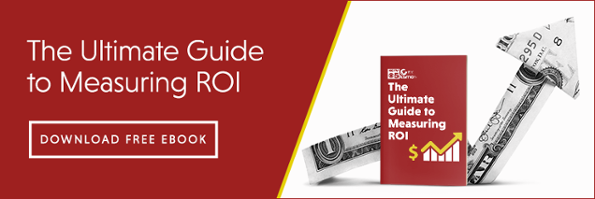
It's time to start planning (and creating a plan for) your New Year's resolutions. Now is the perfect time to dive into your marketing goals for the year ahead and develop an annual marketing plan for 2022.
This big-picture view will be an invaluable resource as you plan quarterly goals and start to lay out campaigns. If you do it now and get all the right parties to sign off on it, you can hit the ground running in 2022 and shake off the post-holiday winter drag.
Remember: without an annual marketing plan, your efforts across the upcoming year won't be aligned with overarching goals. So use these tips to get started.
Setting Marketing Goals and Objectives for 2022
 Review your marketing plan from 2021, and see what worked. Evaluate and improve last year’s marketing with some new tactics. Different marketing trends are starting to emerge, and consumer trends are also shifting.
Review your marketing plan from 2021, and see what worked. Evaluate and improve last year’s marketing with some new tactics. Different marketing trends are starting to emerge, and consumer trends are also shifting.
So the first step in creating an annual plan is to replace your goals. Creating SMART goals, especially, can help guide your path, but a big-picture overview can have less specific annual goals (as long as your quarterly goals pick up the slack). Your intentions can include working in a new CRM, having a business blog, or having a robust influencer marketing strategy.
Next, create your objectives. Did you know that goals and objectives are a bit different? The goal is the outcome, the objective is the action. So your matching objectives may be to roll out a new CRM, transition data into it, train employees on it, create a content strategy, and network with influencers until you have some partnerships under contract.
Pro Tip:
Don't skip the objectives! They transform high-level outcomes into high-level action statements, making it easier to create quarterly milestones and directives later.
What Is a Marketing Strategy?
The next piece of your plan is your marketing strategy. A marketing strategy will be your organization's core document outlining your product initiatives, pricing strategies, place in the market, and promotional strategies — these four 'P's make up the plan's core.
It should include your value proposition (which may be largely unchanged from 2021), your customer demographics and buyer personas, and the core message you want all of your campaigns to align with. Even if these elements transfer smoothly from one year to the next, do some research to check for changes.
Your buyer personas may have shifted over the last year. To keep up, either make more detailed descriptions or define your new core market. Take the time to make sure this backdrop for all of your marketing initiatives is accurate and aligned with your business's goals.
Prioritize the Channels You Want to Use
 Now that you've confirmed whom to direct your marketing efforts, you can decide where to find them. Use as recent research as possible — either from your analytics or from industry reports — to identify the top channels for your core market segment.
Now that you've confirmed whom to direct your marketing efforts, you can decide where to find them. Use as recent research as possible — either from your analytics or from industry reports — to identify the top channels for your core market segment.
Options may include:
- Streaming television and radio
- Traditional broadcasting
- Social media
- Website content and blog posts
- And more
Don't pick just one. An omnichannel marketing approach creates more touchpoints with less risk of ad fatigue and will keep your brand top of mind in more contexts that matter to your audience.
Plan Your Campaigns for the Calendar Year
Once your overarching plan is established, you can start to schedule out campaigns across the year. Allow for some fluidity, but decide when you want campaigns to start, when certain requisite tasks need to be completed before the campaign can begin, and other important points throughout the year. This will help you determine how much your team can handle from month to month and ensures you have adequate time to get your time-sensitive campaigns ready on time.
Decide Which KPIs You Will Measure
As the old saying goes, you can't manage what you don't measure! Every campaign should be assessed during each step and afterward. This allows you to both make in-the-moment changes and evaluate the ROI of the campaign. It will be challenging to measure it when you're in the thick of things, especially if your tools provide you with a lot of data.
Determine now which key performance indicators will matter. Choose the KPIs that align with your annual goals. For example, if you're focused on growth and have a large budget, you'll prioritize conversion rate over keeping a low cost per acquisition.
What Will Your Success Be Defined By?
 As you're finishing up your marketing plan, establish criteria for assessing 2022 a year from now. Do you need to accomplish all of your marketing goals? How many milestones and stretch goals do you need to hit for the year to be a success? This will organize your efforts and motivate you for the year ahead.
As you're finishing up your marketing plan, establish criteria for assessing 2022 a year from now. Do you need to accomplish all of your marketing goals? How many milestones and stretch goals do you need to hit for the year to be a success? This will organize your efforts and motivate you for the year ahead.
Work With a Media Partner to Execute Your Plan
Ambitious plans need ambitious partners. If you want to grow your marketing efforts in 2022 to include new strategies and reach a bigger audience, KCTV5 is here to help. Our team of marketing specialists and analysts can help you transform your annual plan into monthly schedules and strategic tasks.






